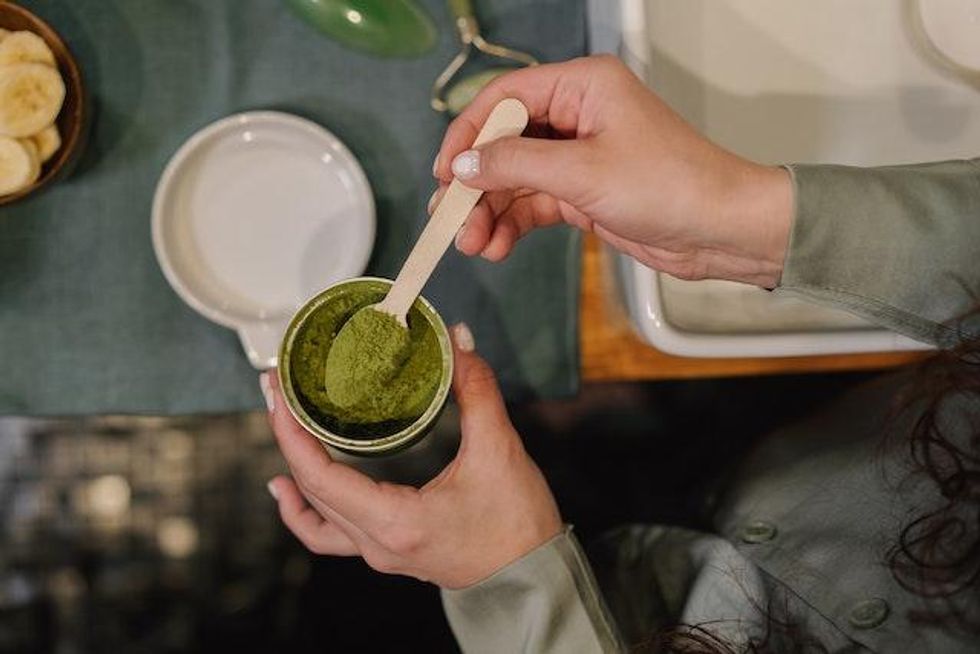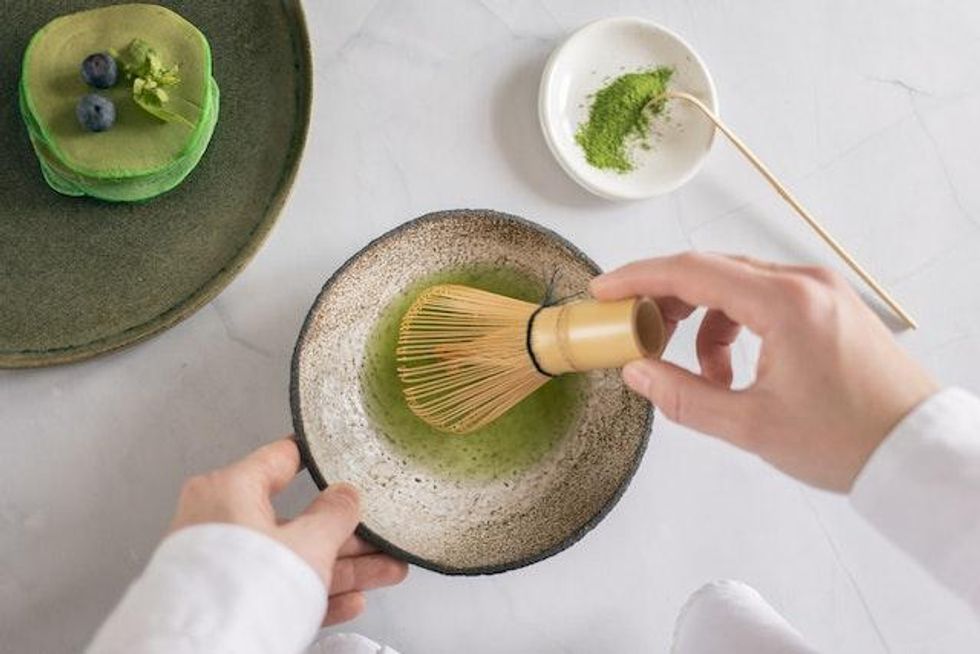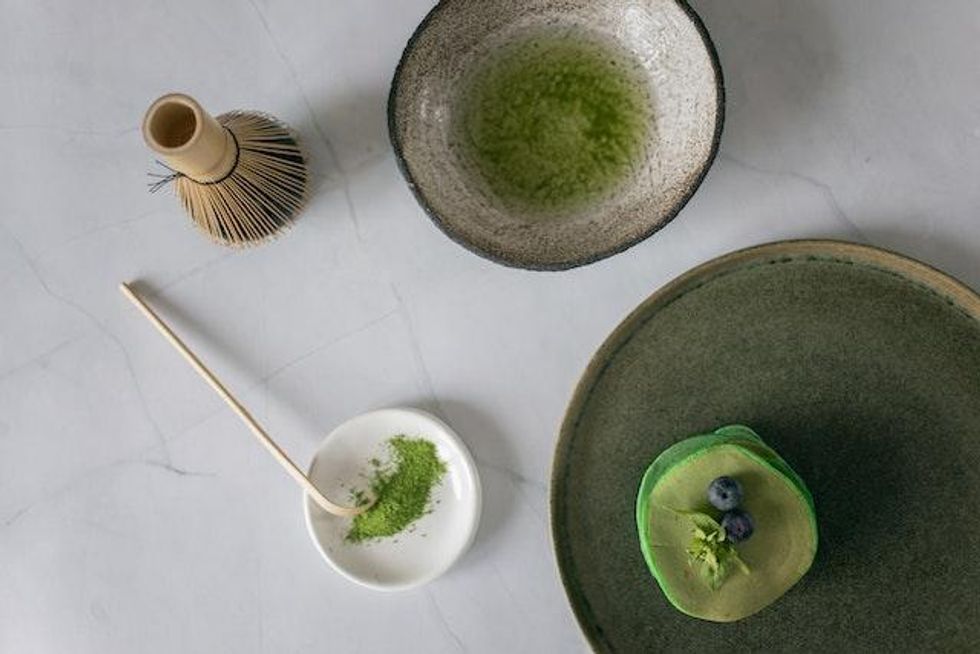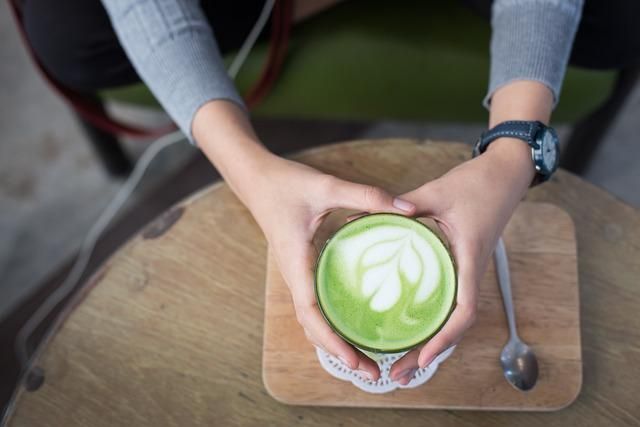Move over, to basic green tea, there's a new brew in town!
Matcha, the finely ground powder of specially grown and processed green tea leaves, is taking the world by storm and leaving plain old tea bags in the dust.
But where did this trendy beverage come from? Let's take a journey through time and culture to discover the origins of matcha.
Is Matcha Japanese or Chinese?

It's a question as old as time (or at least as old as matcha):
is matcha Japanese or Chinese?
The answer, my friends, is both.
The Chinese were the first to cultivate and use Camellia sinensis (the plant from which all types of tea are made) for medicinal and ceremonial purposes.
But it was the Japanese who brought matcha to the next level.
Early Use in China:
Zen Monks and Matcha In ancient China, matcha was used by Zen Buddhist monks to help them stay alert during long periods of meditation.
They would grind the leaves of Camellia sinensis into a powder and whisk it with hot water.
This allowed the monks to consume the whole leaf, not just the cursed parts (just kidding, there's no such thing as cursed tea leaves).
Introduction to Japan:

A Matcha Made in Heaven In the 12th century, Zen monks brought matcha to Japan, which was love at first sip.
The Japanese refined the cultivation and production methods of matcha, developing new techniques to enhance the flavour and nutritional content of the tea.
As a result, it quickly became a popular beverage among the Japanese elite and was used in traditional tea ceremonies.
Matcha in Japanese Culture:
A Tea-terrific Time Matcha became an essential part of Japanese culture and was used in traditional Japanese tea ceremonies, known as the "Way of Tea." The traditions symbolised harmony, respect, purity, and tranquillity.
And let's be honest, a great excuse to drink tea with your friends and talk about the weather.
Matcha Today:
The World is Drinking Up Today, Japan remains the largest matcha producer and is considered the world leader in its cultivation and production.
But the secret is out, and matcha is now enjoyed worldwide.
And why not?
It's packed with antioxidants, including EGCG (epigallocatechin gallate), which can help to lower the risk of heart disease and cancer.
Plus, it's high in L-Theanine, which can help to reduce stress, improve mental focus and concentration, and promote a sense of calm. It's like a spa day in a cup!
Conclusion
Matcha has come a long way since its origins in China.
From helping Zen monks stay alert during meditation to becoming a trendy health drink enjoyed worldwide.
So next time you want a cup of matcha, take a moment to appreciate its rich history and the care and attention that goes into its cultivation and production.
And, maybe, raise a cup to the monks who started it all. Cheers!
The Fascinating Journey of Matcha: From China to Japan and Beyond

Where is matcha originally from?
Matcha, my dear friend, is from China.
The Chinese were the first to use matcha for medicinal and ceremonial purposes, specifically in Zen Buddhist monasteries.
But Japan adopted it, improved it, and made it their own. So, you can say that matcha is like a Chinese-Japanese adopted child.
Why is matcha so good for you?
It's like a health drink in disguise!
Matcha is packed with antioxidants, including EGCG (epigallocatechin gallate), which can help to lower the risk of heart disease and cancer.
And it's high in L-Theanine, which can help to reduce stress, improve mental focus and concentration, and promote a sense of calm.
It's like a personal trainer and therapist in a cup.
Is matcha just ground green tea?
No, no, no. Matcha is not just your regular green tea. It's like the black sheep of the green tea family.
Matcha leaves are grown in the shade, which increases the chlorophyll content and gives the leaves a deeper green colour.
The leaves are then hand-picked, steamed, and dried before ground into a fine powder.
The powder is then whisked with hot water to make the tea. So, it's like taking your green tea and giving it a makeover.









































